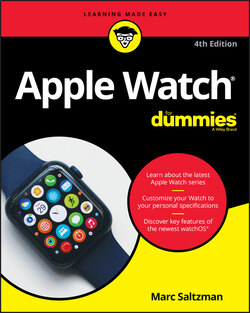Читать книгу Apple Watch For Dummies - Marc Saltzman - Страница 42
На сайте Литреса книга снята с продажи.
Using Apple Watch’s Touchscreen
ОглавлениеJust like you can interface with a smartphone, tablet, and laptop in different ways — based on the task at hand — Apple Watch gives you three ways to use the small screen on your wrist:
Tap: Tapping with one finger on Apple Watch performs the same function as you’d expect on a smartphone: It selects whatever you’re tapping, such as an icon to launch an app, a song to play a track, a link to a website, a photo to enlarge, or virtual buttons, such as on a calculator. On the Home screen, you tap and slide your finger around to move the icon bubbles. A tap is like a left-mouse click on a computer.
Press: Apple Watch knows the difference between a quick tap and a longer press — usually when you need to open some additional menus. Think of it as a kind of right-mouse click. For example, tapping a song plays the track, but pressing and holding it opens a set of options: Shuffle, Repeat, Source, and AirPlay. The technology that senses the difference between a tap and a press is called Force Touch.
Swipe: Many of the areas of Apple Watch — like Dock — and most of the apps you can access let you swipe left and right or up and down to navigate between different screens. For example, in Workout mode, you can see time elapsed as well as heart rate info, but swipe to the side to pull up music that you can pause and play. Swipe one more time and you’ll see some options, including the ability to lock your watch so you don’t accidentally tap the screen during rigorous exercise, to pause your counter, and so on.
Some features are activated with two fingers pressed on the screen. In Chapter 5, you can find out how to record and send your heart rate or heartbeat to a loved one’s Apple Watch.
